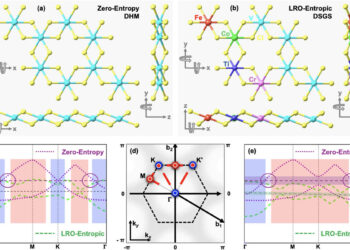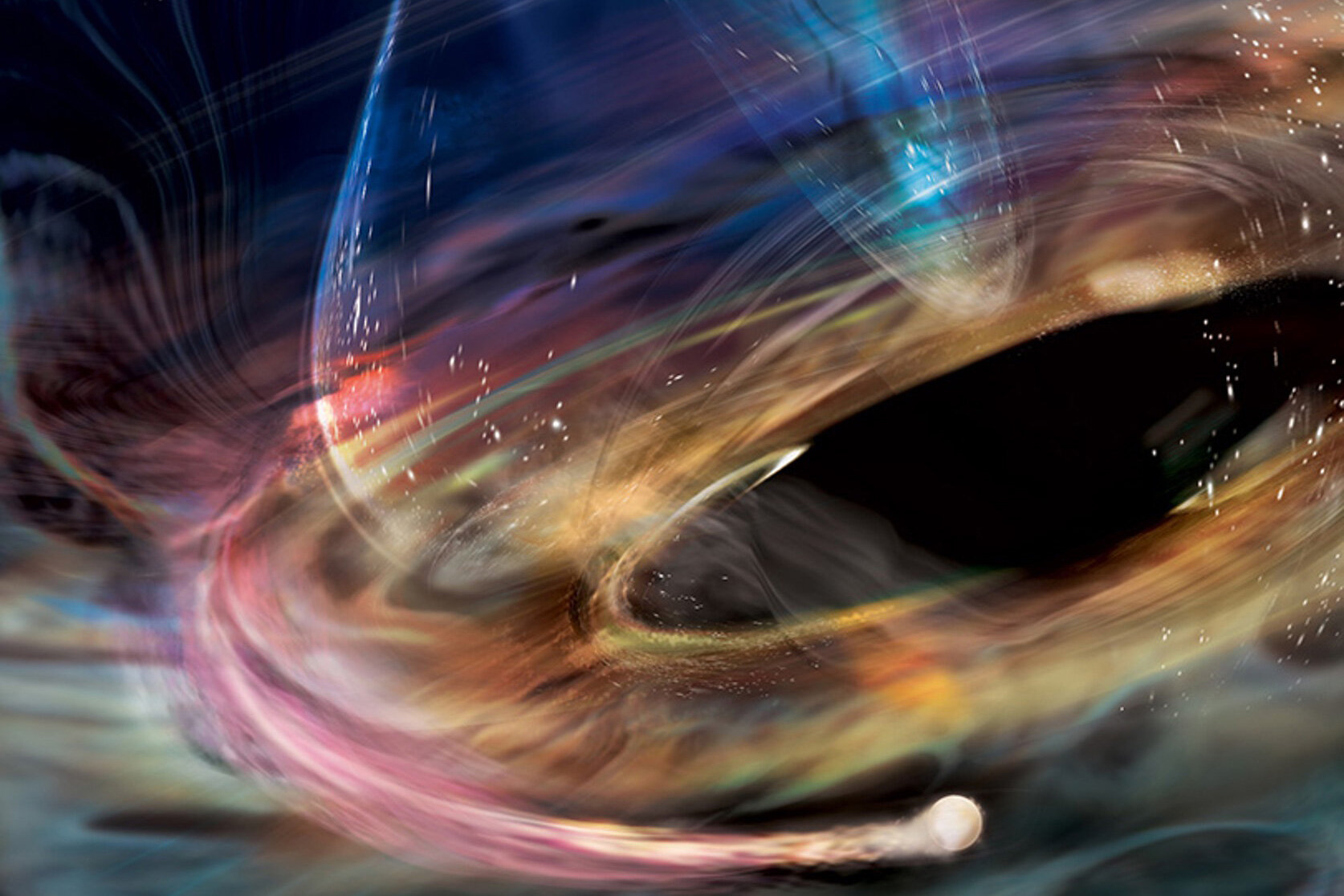Since the invention of the laser in 1960, nonlinear optics has advanced at a remarkable pace, seeking new methods to manipulate light and expand its spectral properties. A key goal in this field has been the development of techniques capable of generating broad spectra across both visible and infrared regions. Among the various nonlinear optical approaches, supercontinuum (SC) generation is particularly noteworthy. SC generation involves the broadening of light spectra into a continuum, covering a wide range of wavelengths. It plays a vital role in applications such as spectroscopy, imaging, and communications, making it one of the most important innovations in nonlinear optics.
Despite its potential, traditional SC generation often faces limitations stemming from the weak third-order nonlinearities in conventional materials. This weakness requires long interaction lengths for efficient frequency conversion, which limits the practicality and energy efficiency of SC sources. To overcome these challenges, researchers have explored the potential of second-order nonlinearities, which offer significant advantages in terms of higher efficiency and reduced power consumption. The catch, however, is the issue of phase mismatching, especially in bulk nonlinear crystals, which has historically impeded the efficiency and the spectral coverage achievable by second-order nonlinear processes.
In recent years, however, second-order nonlinear optical processes have made a comeback with new and exciting possibilities. A significant breakthrough in this area was presented in a study published in Light: Science & Applications by a collaborative research team from Aalto University, Tampere University, and Peking University. Led by Professor Zhipei Sun, this innovative work demonstrated a groundbreaking approach for generating octave-spanning coherent light at an incredibly small scale—less than 100 nanometers—using phase-matching-free second-order nonlinear optical frequency down-conversion in ultrathin materials like gallium selenide (GaSe) and niobium oxide diiodide (NbOI2).
This new technique overcomes the longstanding limitations of bulk crystals by leveraging ultrathin materials, allowing for phase-matching-free second-order nonlinear optical processes that require significantly shorter interaction lengths. The researchers successfully generated a coherent light source that spanned a spectral width of 40 dB across the range from 565 nm to 1906 nm. This result was achieved via difference-frequency generation (DFG), a process where two photons with different frequencies combine to produce a new photon with a frequency corresponding to the difference between the two original frequencies. The ability to create light that covers such a vast spectral range is especially powerful, as it enables the generation of light in both the visible and near-infrared regions of the spectrum with much greater efficiency than earlier techniques.

One of the most significant advantages of this new approach lies in the scale and power requirements. The thinness of the crystals used in this research—on the order of nanometers—means that the overall interaction lengths are reduced by orders of magnitude compared to conventional methods that rely on bulk materials. This small scale results in a considerable reduction in the power required to generate coherent broadband light. For instance, the total excitation power needed for generating such a wide spectrum with these ultrathin materials is two to three orders of magnitude lower than what would be needed for similar results with bulk crystals.
Furthermore, the researchers were able to demonstrate impressive efficiencies in the conversion process. The conversion efficiency per unit length for the thin NbOI2 crystal surpassed 0.66% per micrometer. This conversion rate is about three orders of magnitude higher than conventional bulk methods, underscoring the importance of material thickness in enhancing efficiency and reducing the power needed for the process.
In assessing the quality and coherence of the generated broadband light, the researchers employed a Michelson interferometer, a key tool for testing the coherence of light sources. The results revealed exceptional fringe visibility of above 0.9, which indicates a high degree of coherence, surpassing many typical sources such as superluminescent diodes or long-pulse SC sources. High coherence is particularly important for applications that require precise control over light’s phase and frequency, such as interferometry and high-resolution spectroscopy.
The exceptional coherence observed in the broadband light generated by the ultrathin GaSe and NbOI2 crystals is attributed to the effective phase-matching-free difference-frequency generation in these materials. Traditional nonlinear frequency conversion typically relies on phase-matching conditions, which are difficult to achieve in bulk crystals, especially when generating broadband spectra. In contrast, the novel approach utilized by the researchers leverages the thinness of the material and the absence of phase mismatching to efficiently generate broadband light with superior coherence. This ability to generate coherent light without the need for phase-matching opens new avenues for creating nanoscale broadband light sources that are compact, energy-efficient, and versatile.
The combination of high efficiency, superior coherence, and the generation of broad spectral output across the visible and infrared regions positions this approach as a breakthrough in the field of nonlinear optics. It promises practical applications in several key areas, including metrology, spectroscopy, and telecommunications. One particularly promising potential application of these “nano rainbows” is in compact light sources for metrology, which requires precise control of light properties for measurements and sensing. Similarly, spectroscopy, which depends on the generation of a broad range of wavelengths for analyzing materials and substances, stands to benefit greatly from the high efficiency and wide spectral output offered by this new method. The telecommunications industry, which often utilizes broadband light sources for communication over fiber optics, could also see tremendous advancements with more efficient and miniaturized light generation techniques.
This breakthrough could significantly advance the development of compact, flexible, and powerful light sources that operate at the nanoscale, opening up new avenues for miniaturizing optical systems in applications such as integrated optics, sensing, and high-performance computing. Researchers envision using these nano-scale broadband light sources in next-generation sensors and imaging systems, where traditional light sources would be too large or inefficient. Furthermore, as the researchers highlighted, the potential of this phase-matching-free second-order nonlinear technique extends well beyond the specific materials used in this study. By employing other 2D materials or exploring new compounds, researchers might achieve even broader spectral spans and improved efficiencies, pushing the limits of what is possible with light manipulation at the nanoscale.
Reference: Susobhan Das et al, Nanoscale thickness Octave-spanning coherent supercontinuum light generation, Light: Science & Applications (2025). DOI: 10.1038/s41377-024-01660-6



![Digitization and adiabatic energy gap. a The procedure to digitize an adiabatic evolution is done through a Riemann-like discretization of the time interval s ∈ [0, 1], where each step in time corresponds to the digital block. The time-continuous adiabatic algorithm implemented through time-dependent fields can be efficiently decomposed in a sequence of pulses through a circuit version of the evolution. After M blocks the output state is expected to be prepared with good fidelity without any computation complexity due to the search for the optimal parameters of the circuit. b The only optimization required to reduce the circuit length is done through the suitable choice of the parameters of the Hamiltonian. The a priori knowledge of the parameters of the Hamiltonian, which leads to a large energy gap, will enhance the digitized algorithm. Credit: Nature Communications (2025). DOI: 10.1038/s41467-025-57812-8](https://www.sciencenewstoday.org/wp-content/uploads/2025/07/quantum-computer-simul-1-350x250.jpg)






